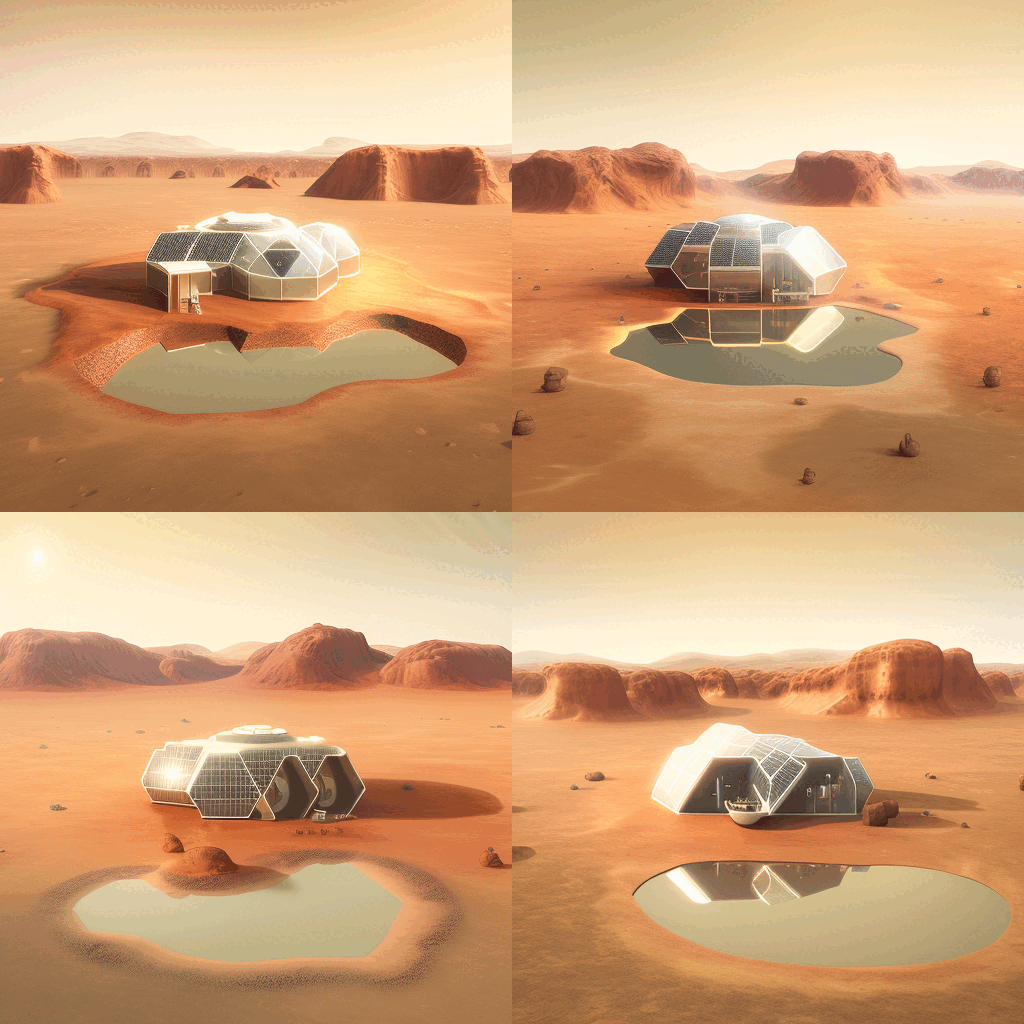
Introduction
For the BIMSC studio project, the class designed a human colony initially capable of accommodating 50 inhabitants, with the potential to expand to 300 inhabitants. Working together, the class settled on the Jezero Crater as the site for the colony and developed a masterplan consisting of thirteen distinct zones. Each group selected one zone and a program. Our group was responsible for designing the medical center for the colony.
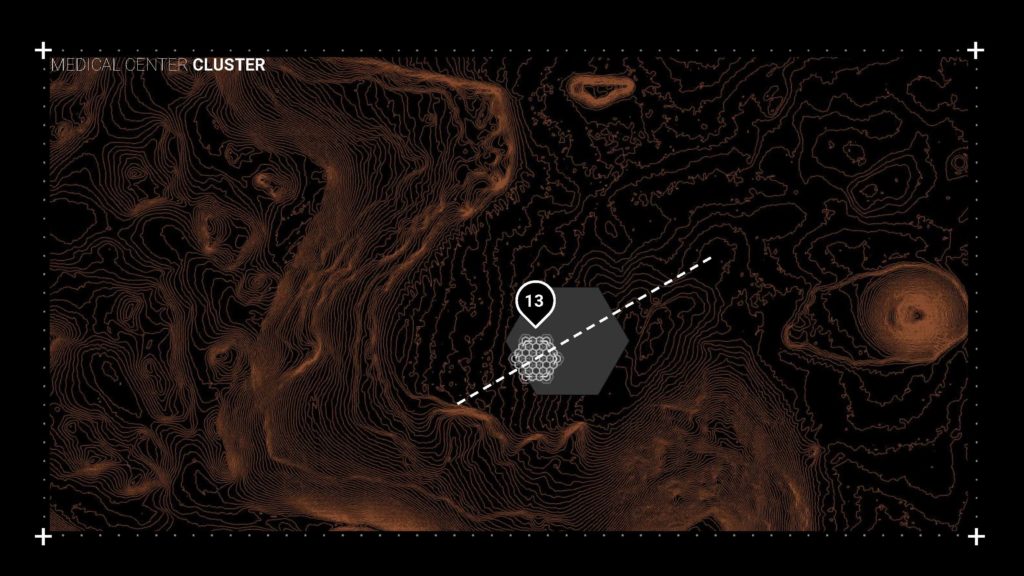
Vision
With the rapid development of tools and technological advancements and the need for a safe haven for the next Martian colonies… Mars Medical Center aims to be a modular and adaptable medical center. The space not only behaves as a container of healing devices but also intends to have qualities of healing spaces, from integrating green areas to the concepts of artificial and natural light.
We propose a 3D-printed modular building consisting of interconnected metaballs arranged on-site along the masterplan’s hexagonal grid lines. The module comes in three different sizes to accommodate program requirements. The interior layouts are also modular, aiming to reduce construction time and costs. To maintain efficiency in travel to Mars and the construction process, the formwork are reusable inflatables that can be 3D printed on. The metaball’s arches or radii dictate the interior partition datum lines.

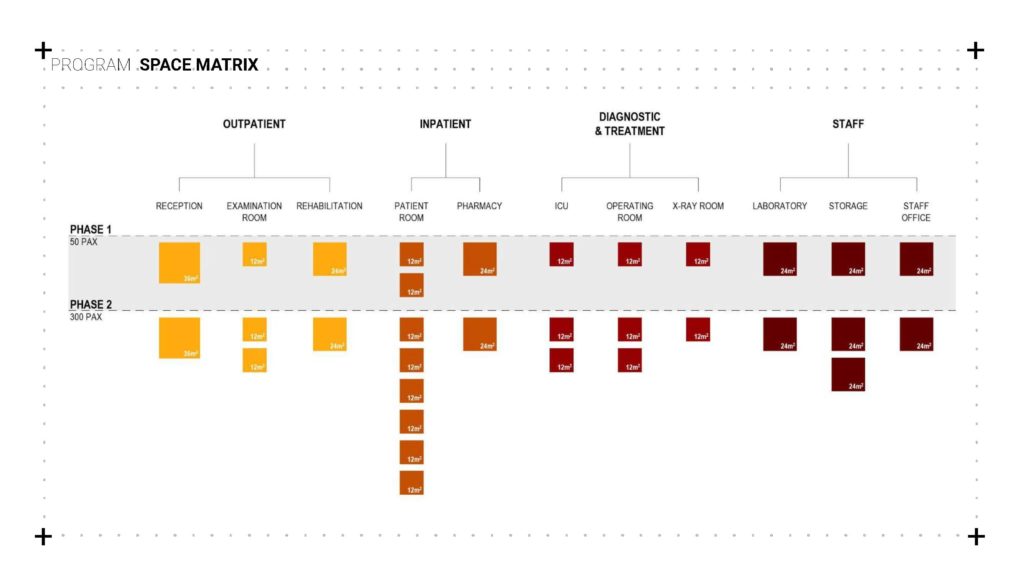
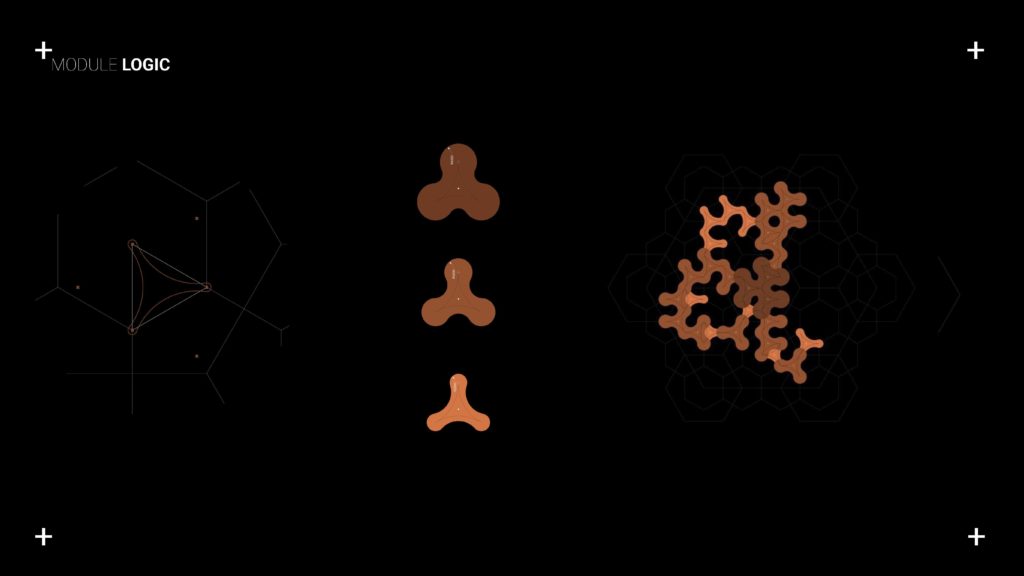

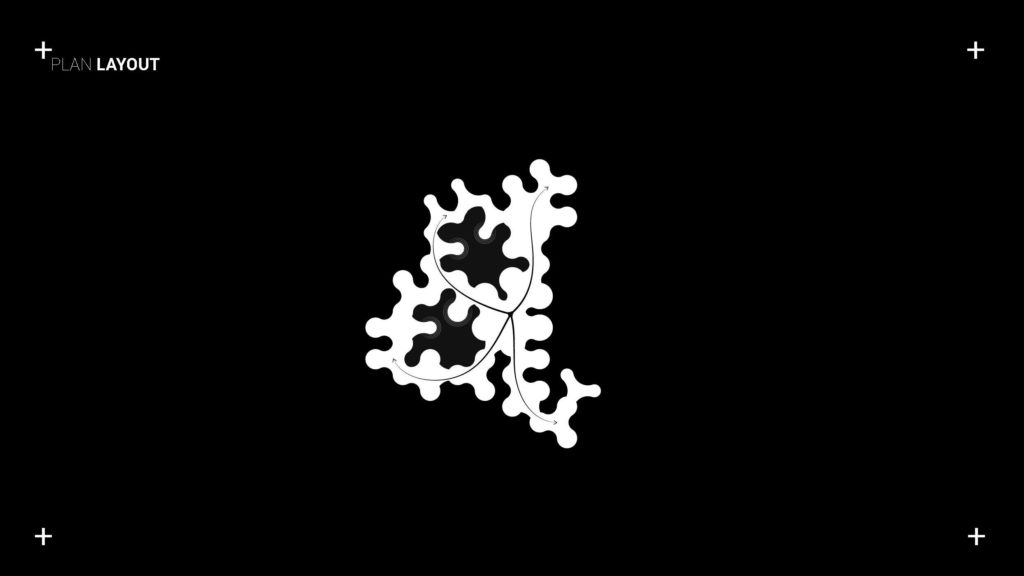
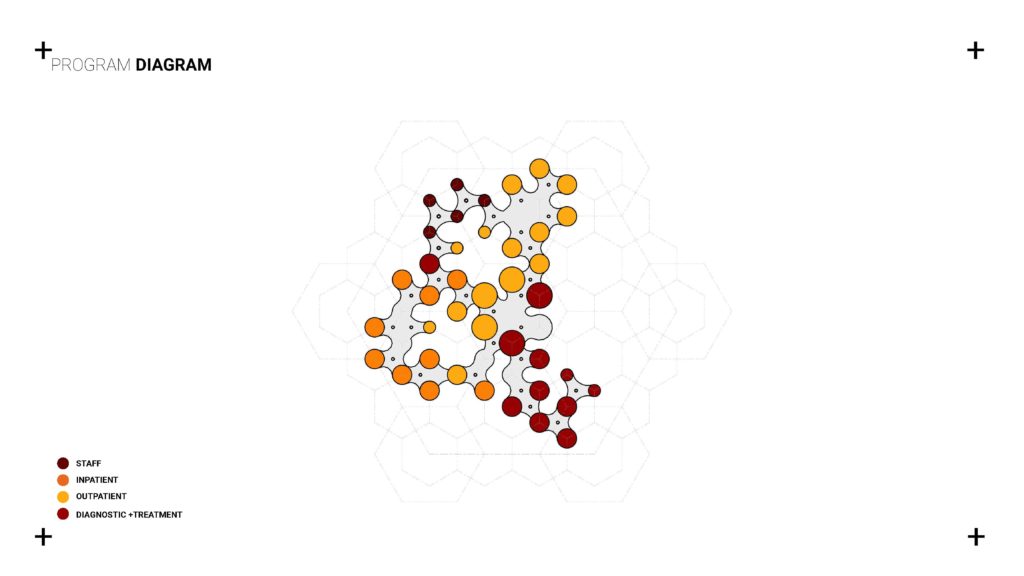
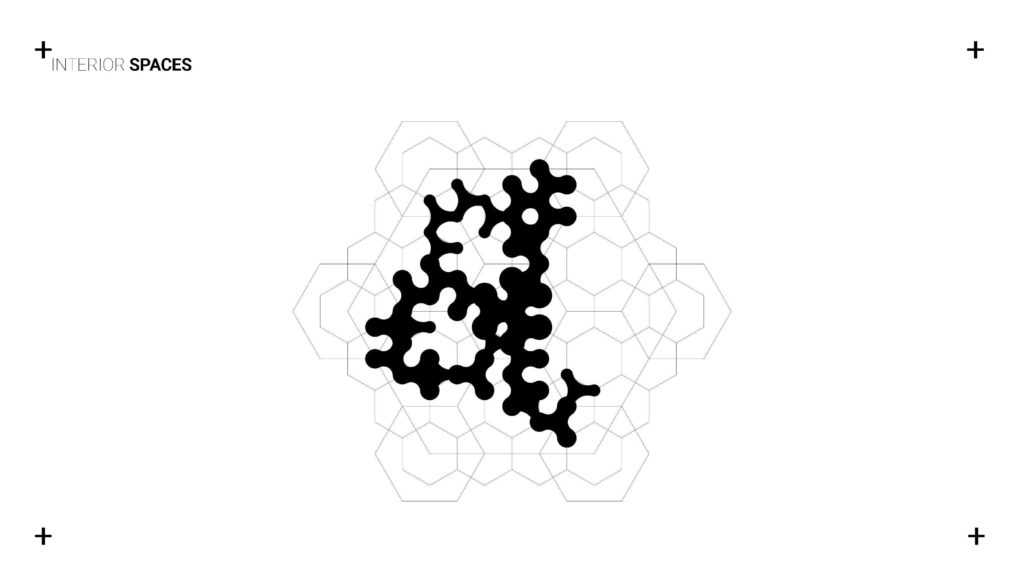
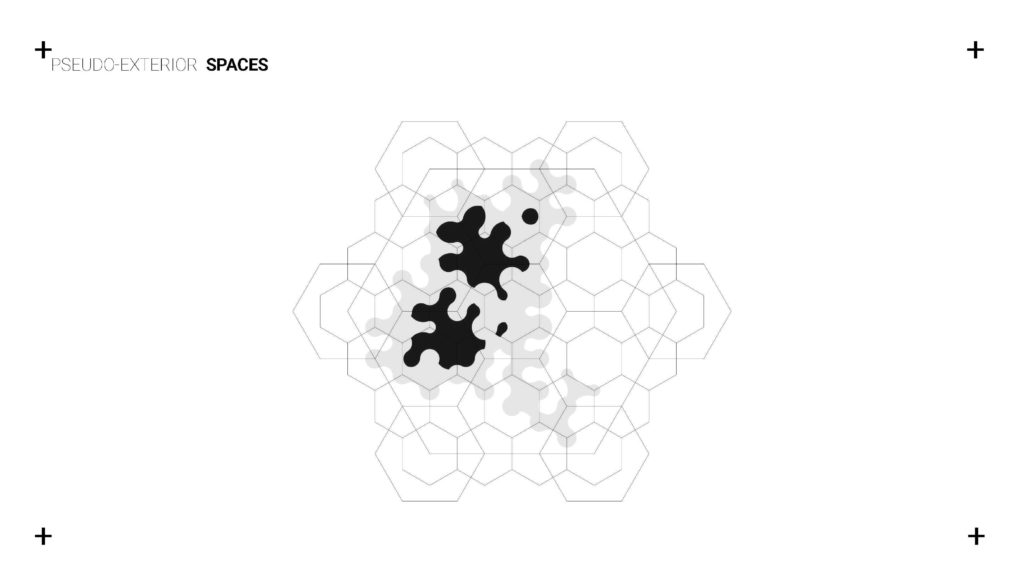


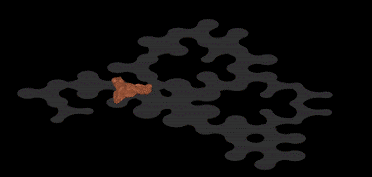

Construction
Due to the harsh building conditions on Mars, a 2-meter thick wall is necessary to protect the interior spaces from cosmic radiation. However, to avoid the hassle of printing such thick walls, we propose using perimetral fin skin along the structure’s geometry. These would be filled with soil, achieving the required 2-meter thickness, saving material, and reducing construction time.
The inspiration for this strategy comes from the ancient Roman technique of constructing double-layer stone walls that are filled with sand to save material. The overall form and shape take inspiration from the terraced paddy fields commonly found in Southeast Asia.
The proposed material for the 3D-printed metaballs is a regolith made from the soil from the site to minimize the material and equipment required from the earth. To construct the module, we propose employing an inflatable formwork for the 3D printing layering and positioning the arm 3D printer at the center of the column.

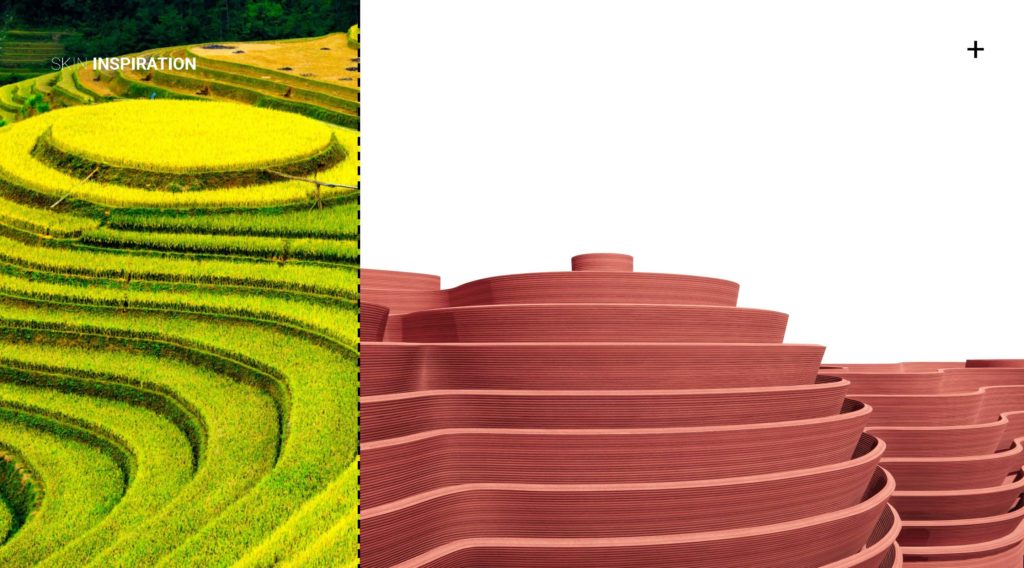
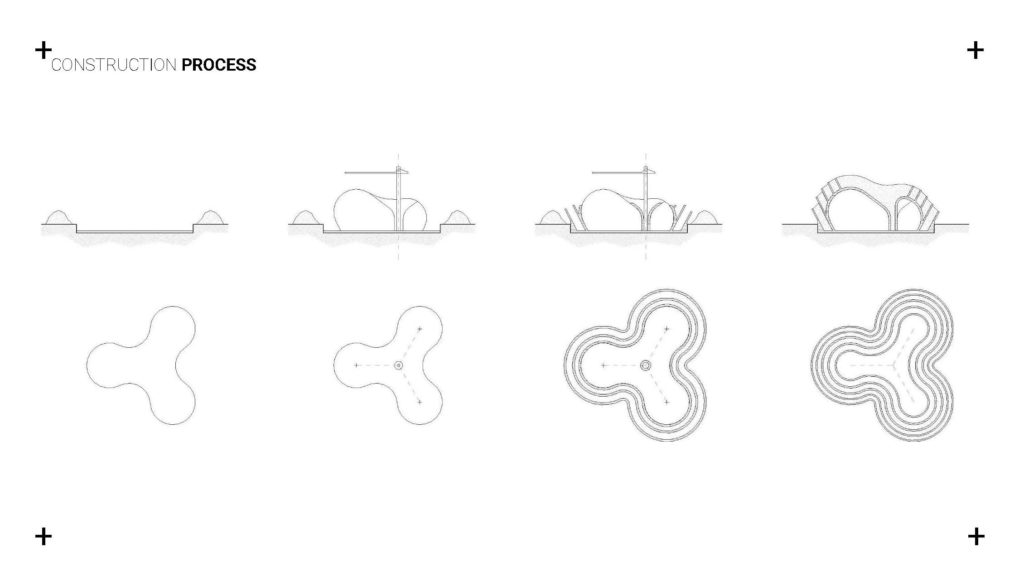
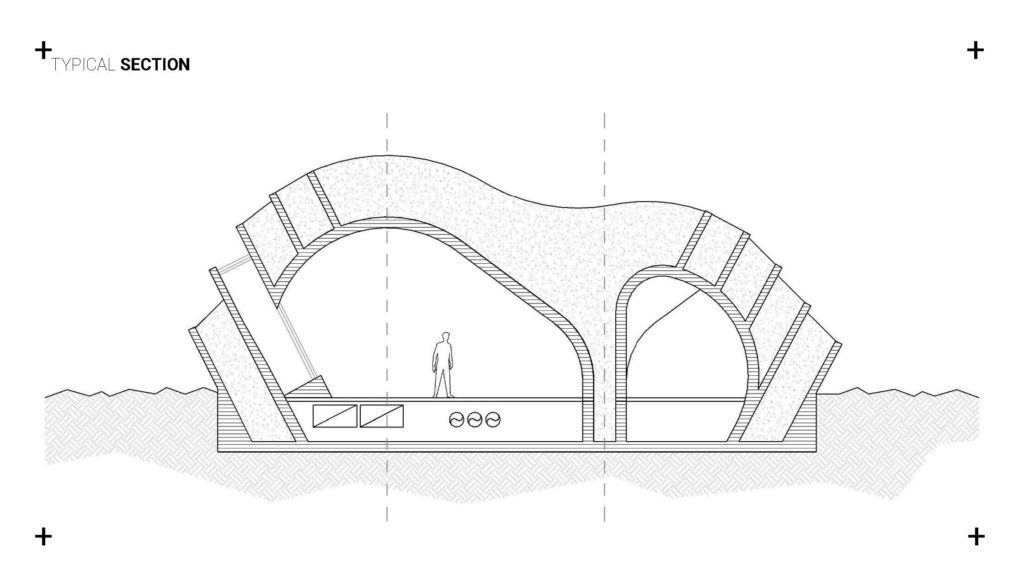
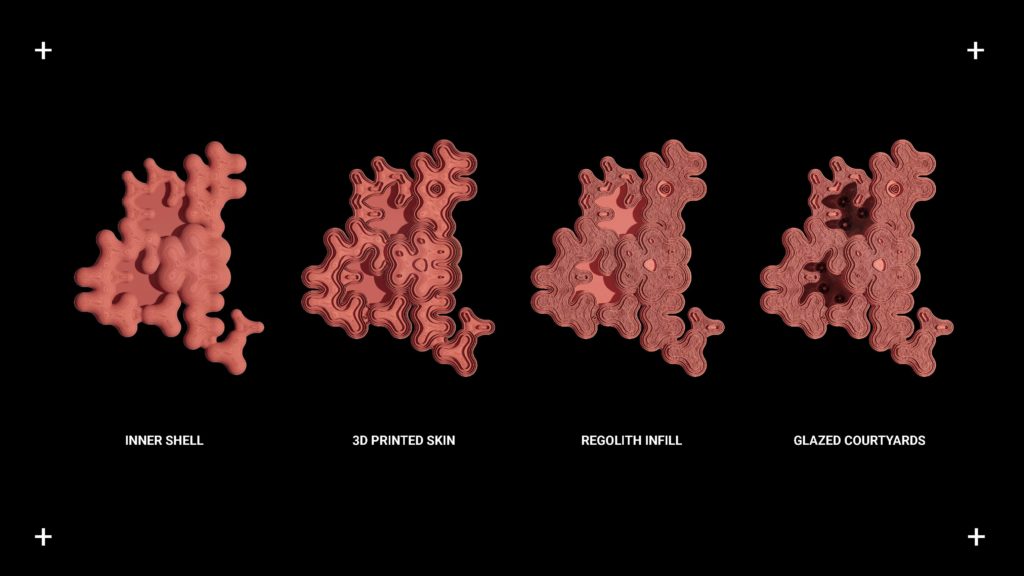
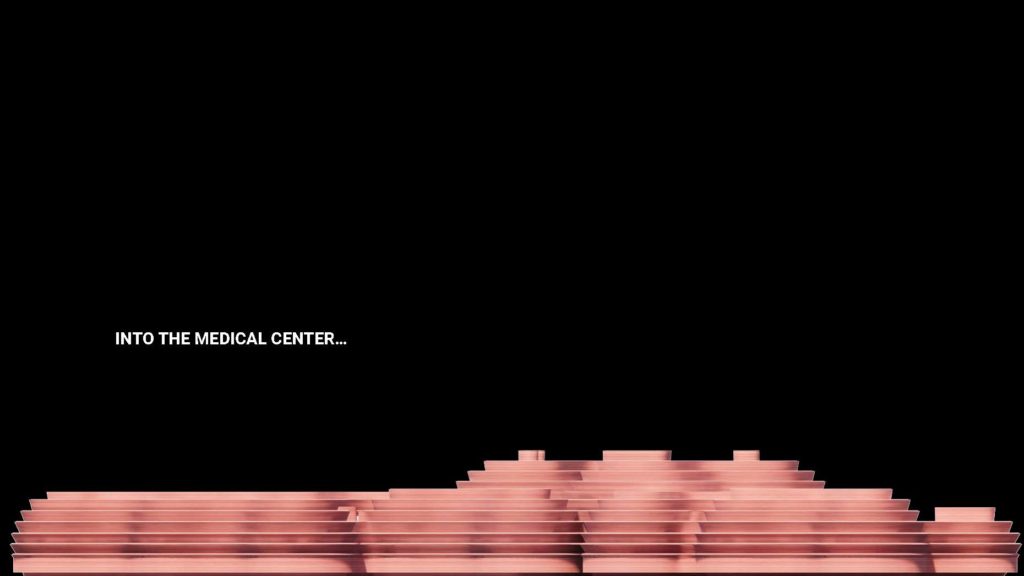
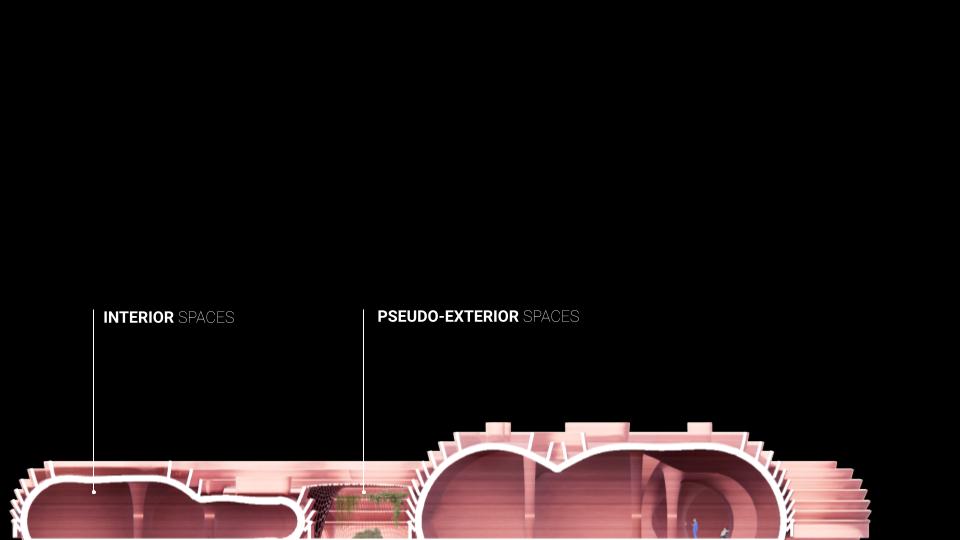
Experience
The interior spaces are organized around a series of external (but still radiation protected) spaces which we refer to as pseudo-exterior spaces. The spaces are designed not only as spaces that hold healing elements and machines; rather, the spaces themselves are intended to reflect healing qualities.
The interiors integrate both natural light and artificial light on the central columns. This is to replicate the circadian cycle and give the users a sense of passage of time. The pseudo-exterior spaces incorporate green to have a biophilic healing effect for the patients in addition to benefiting from pharmaceutical crops. In general, the medical center reflects therapeutic qualities both in terms of program and architectural features.
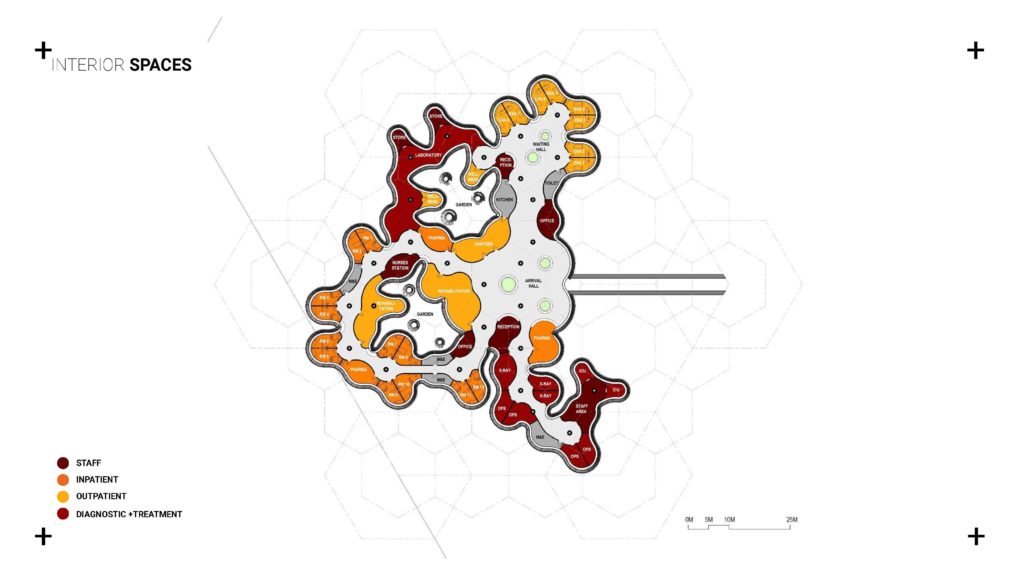

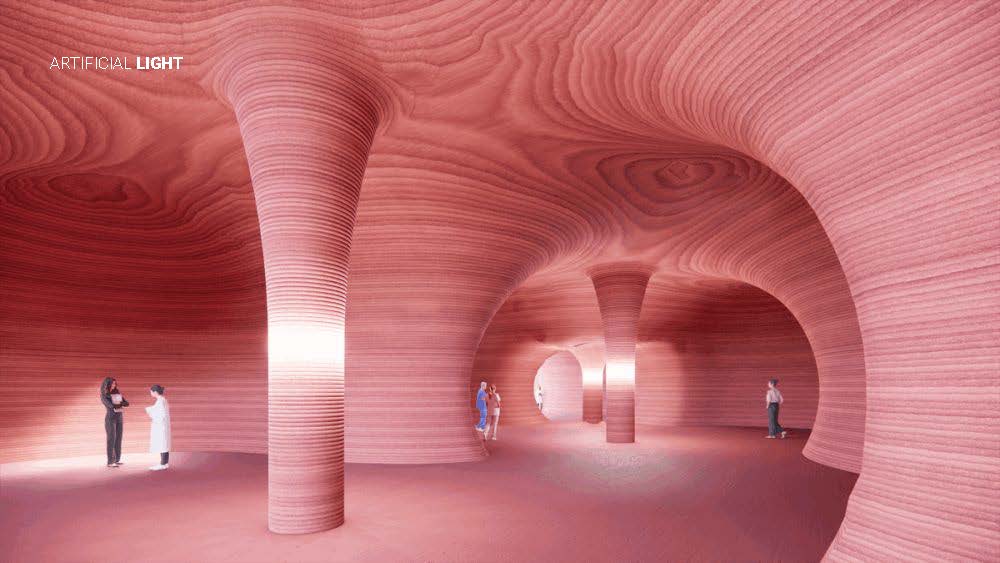

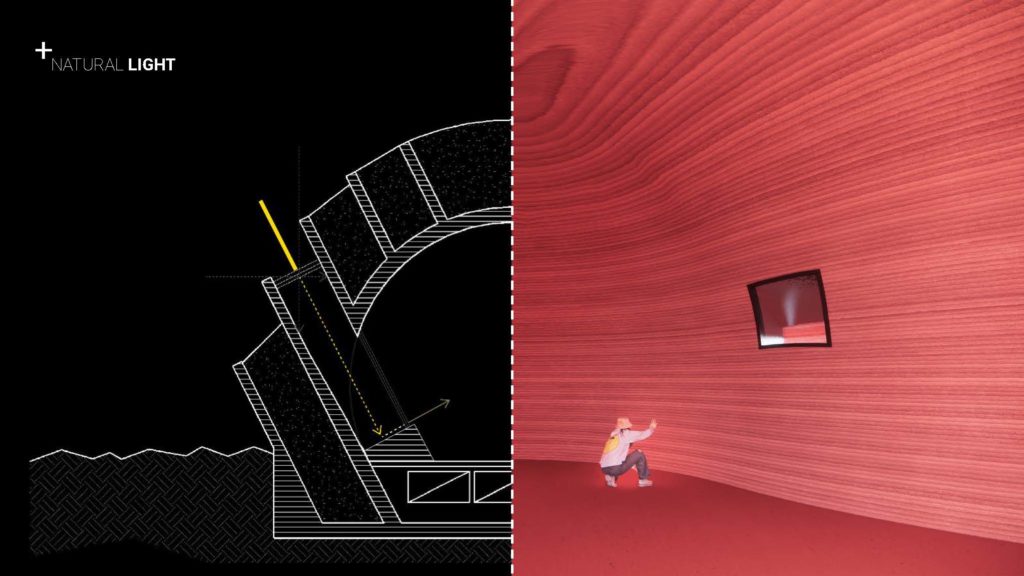
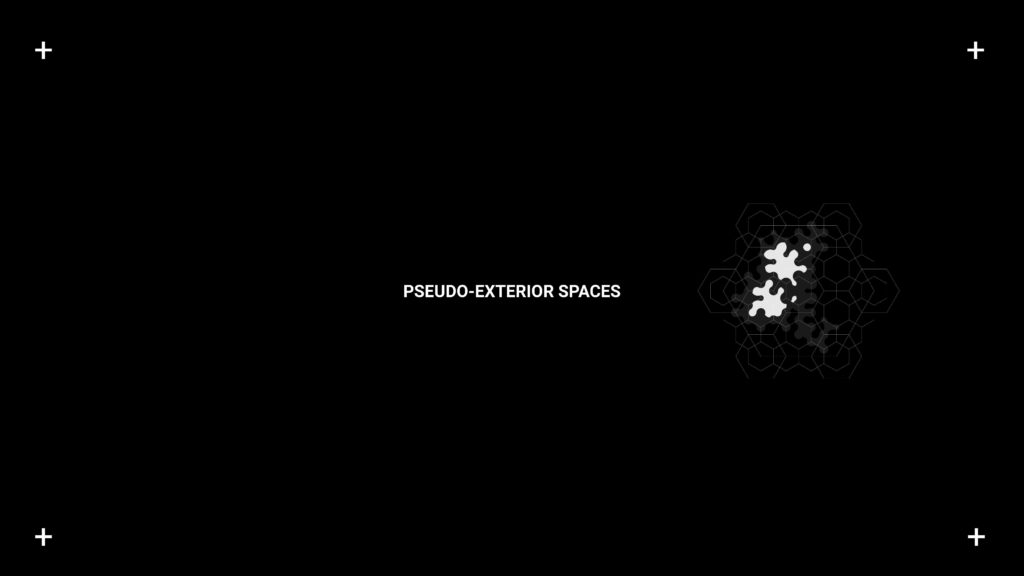
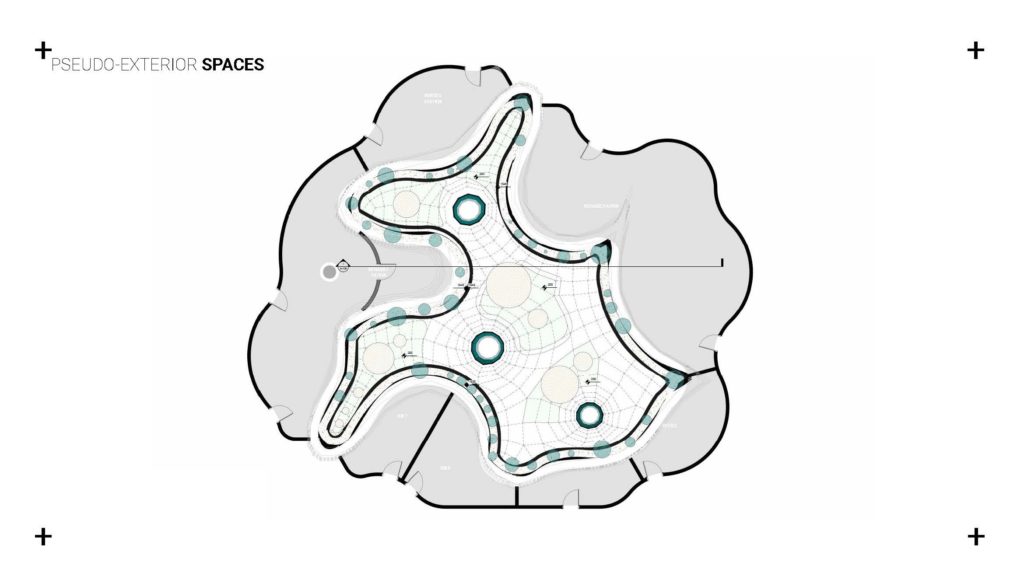
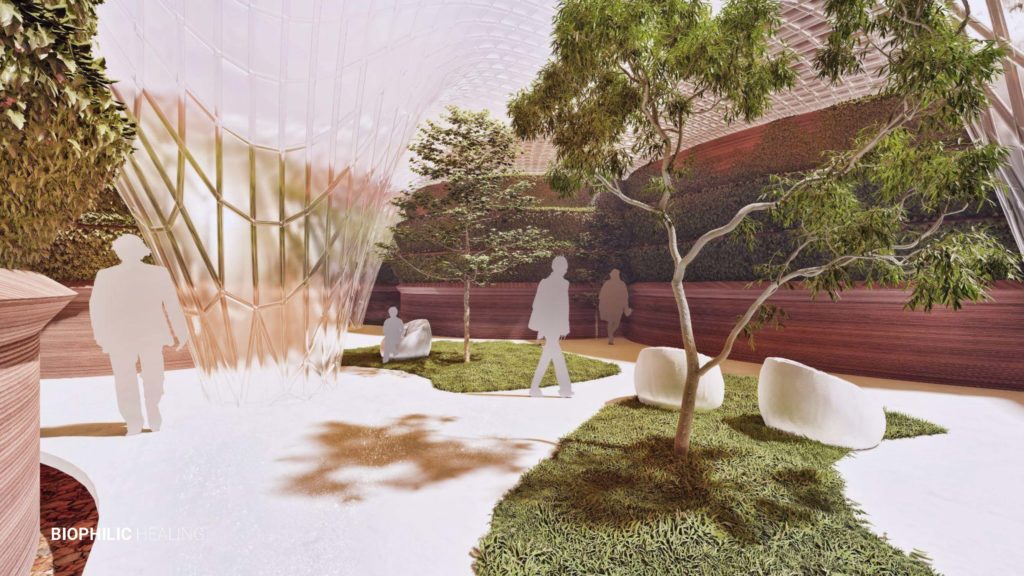
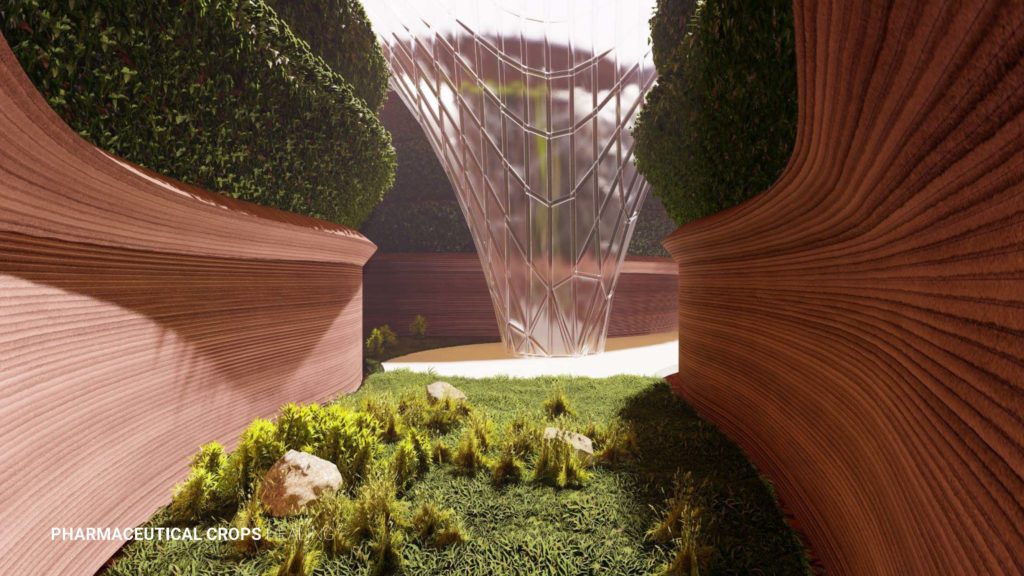
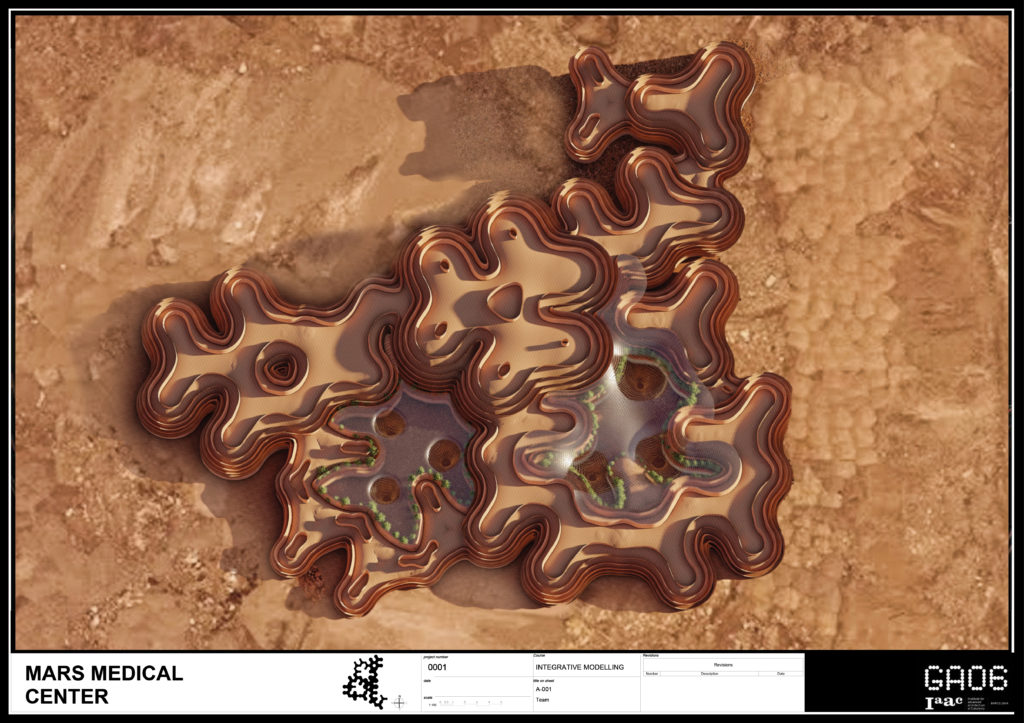
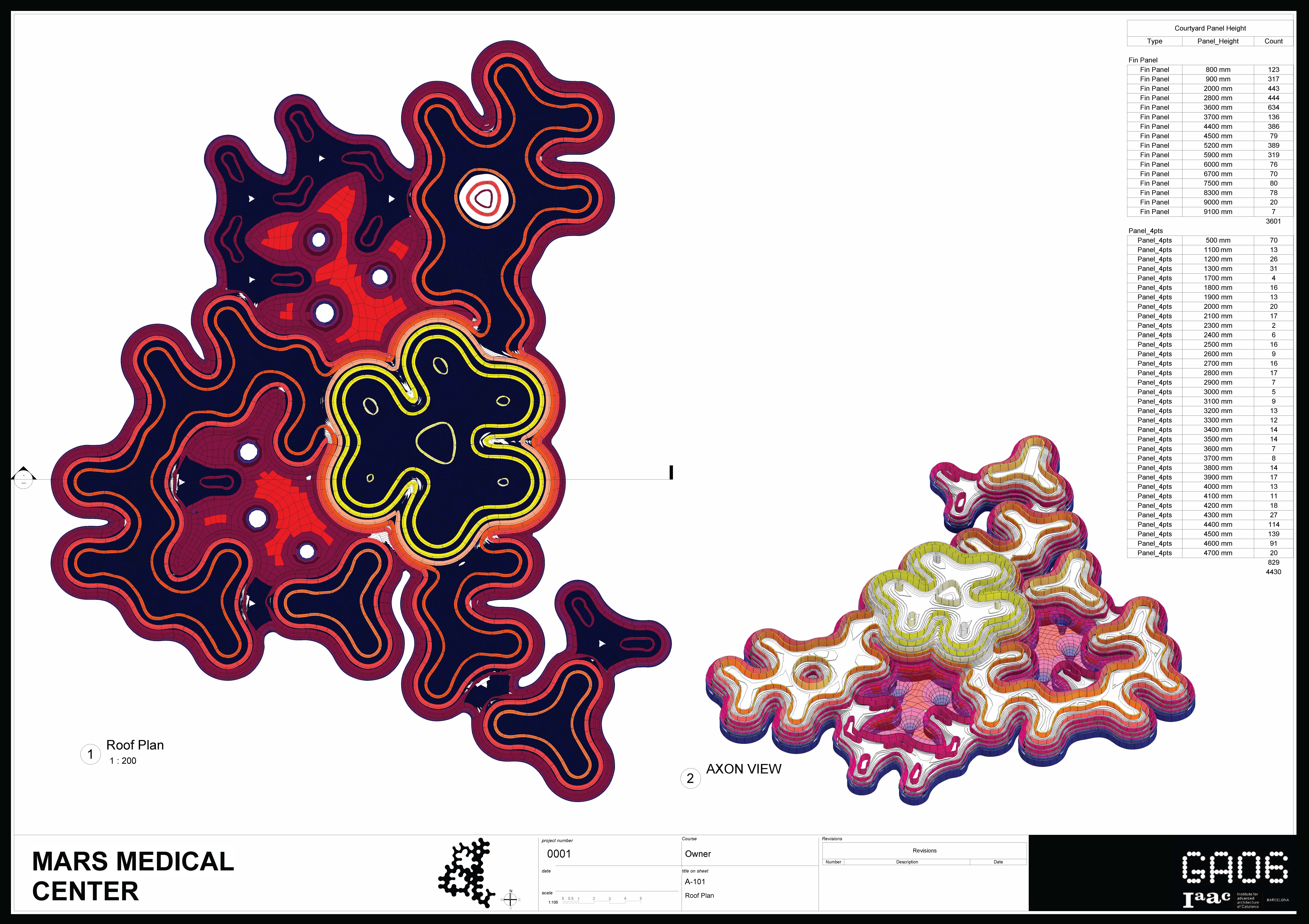
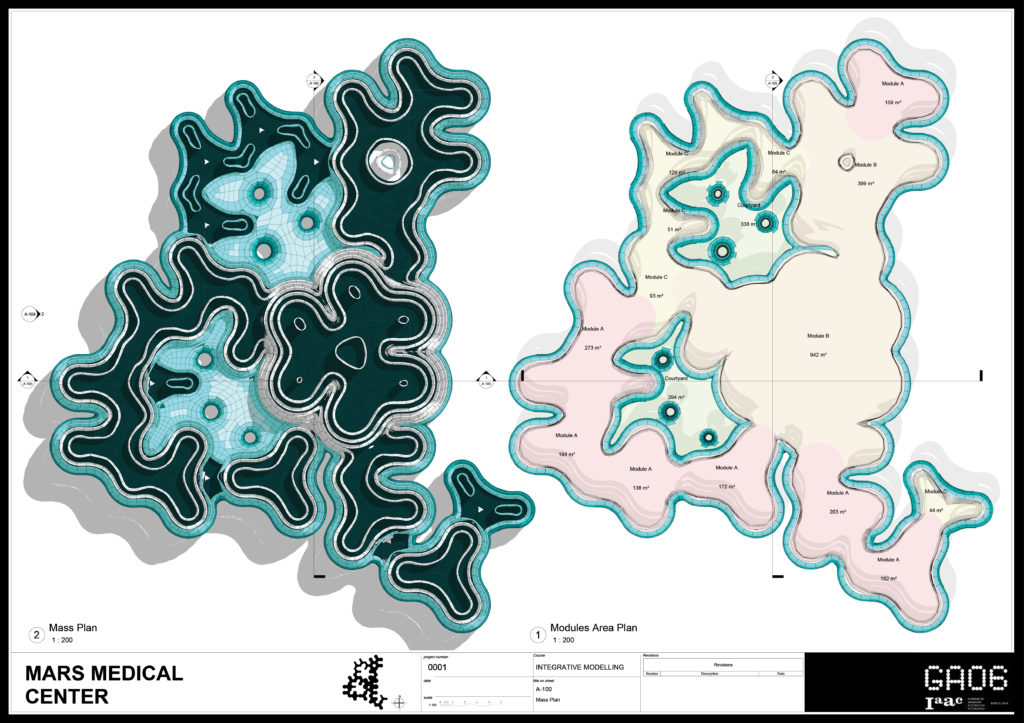
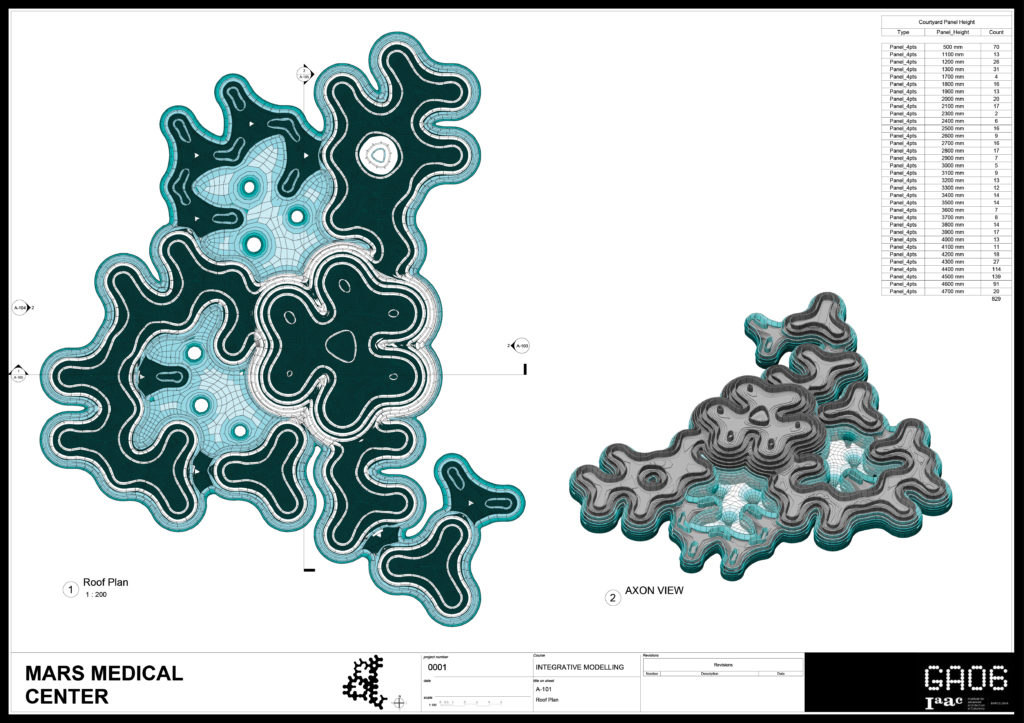
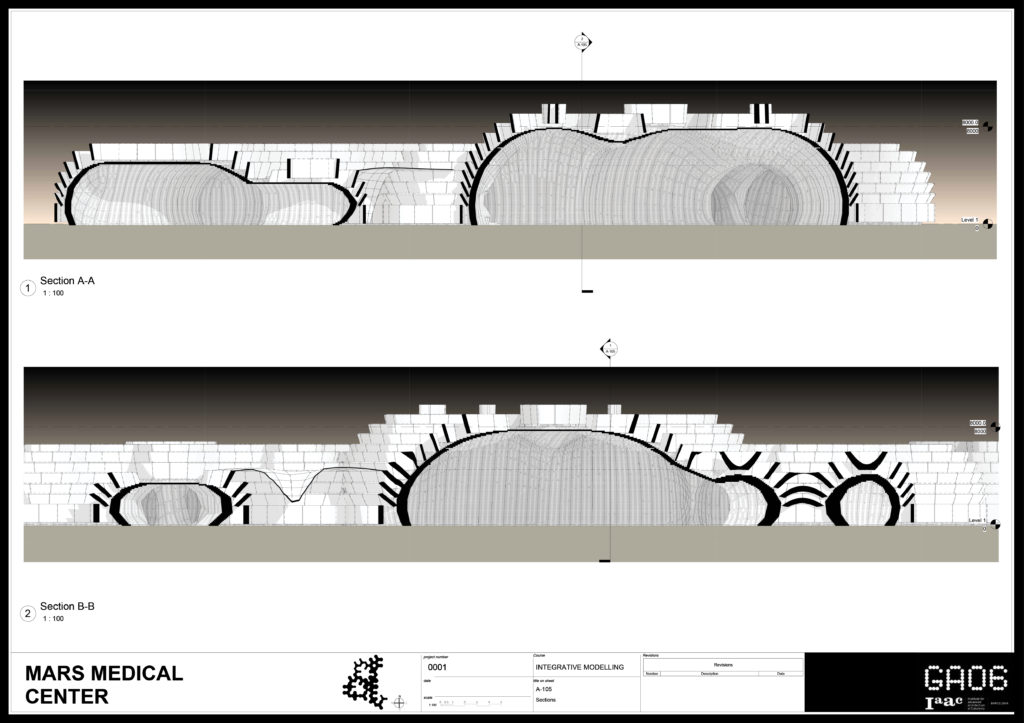
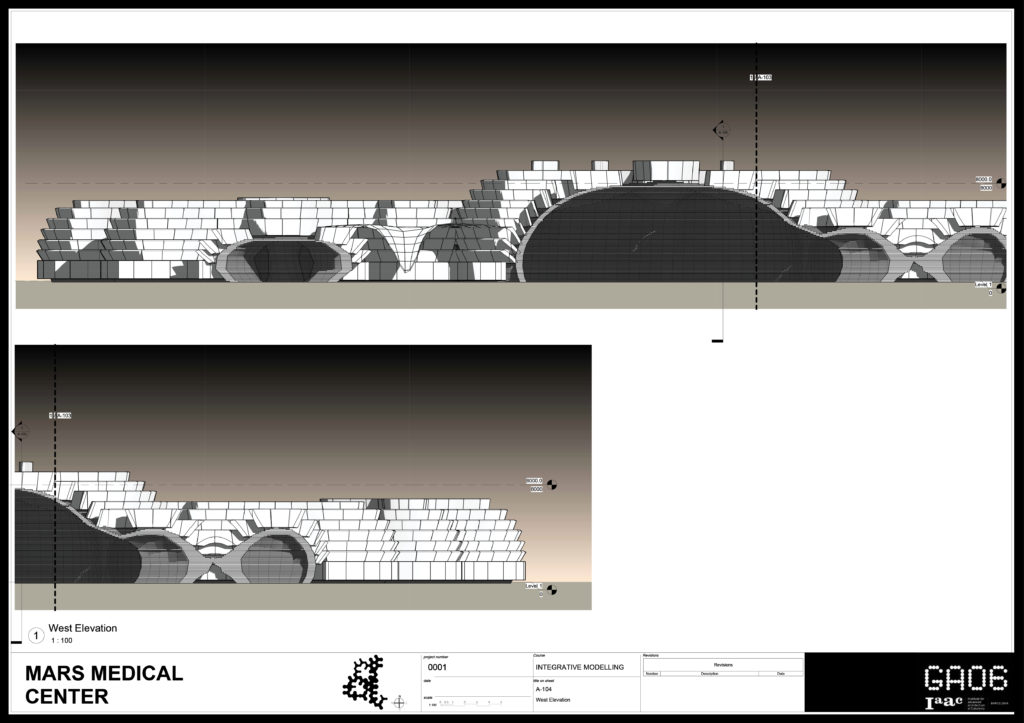

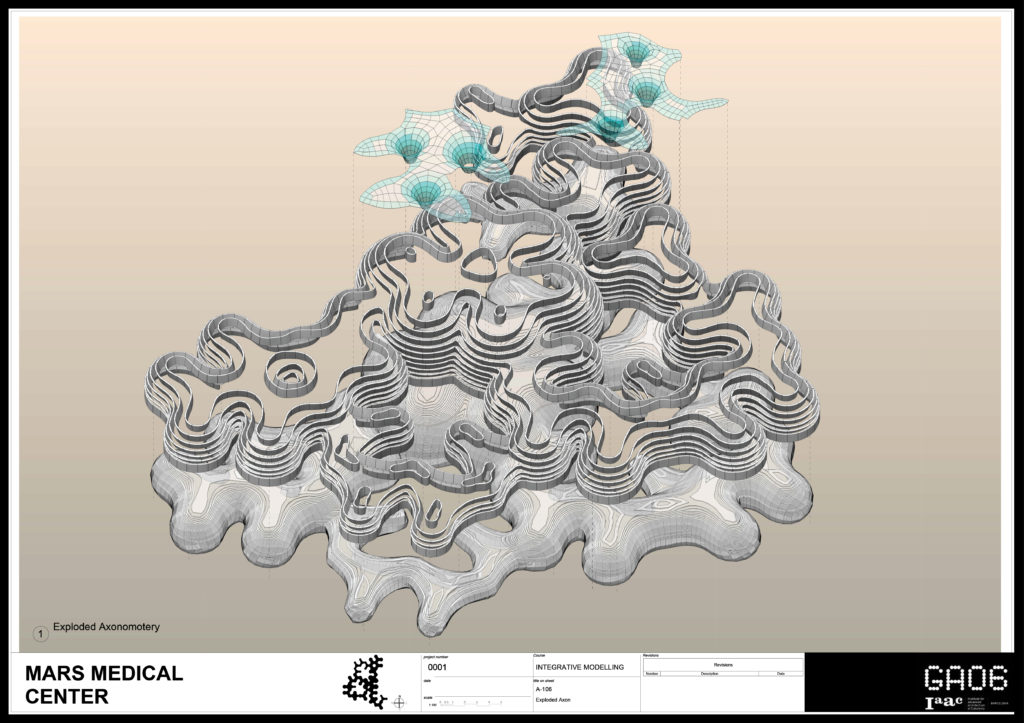
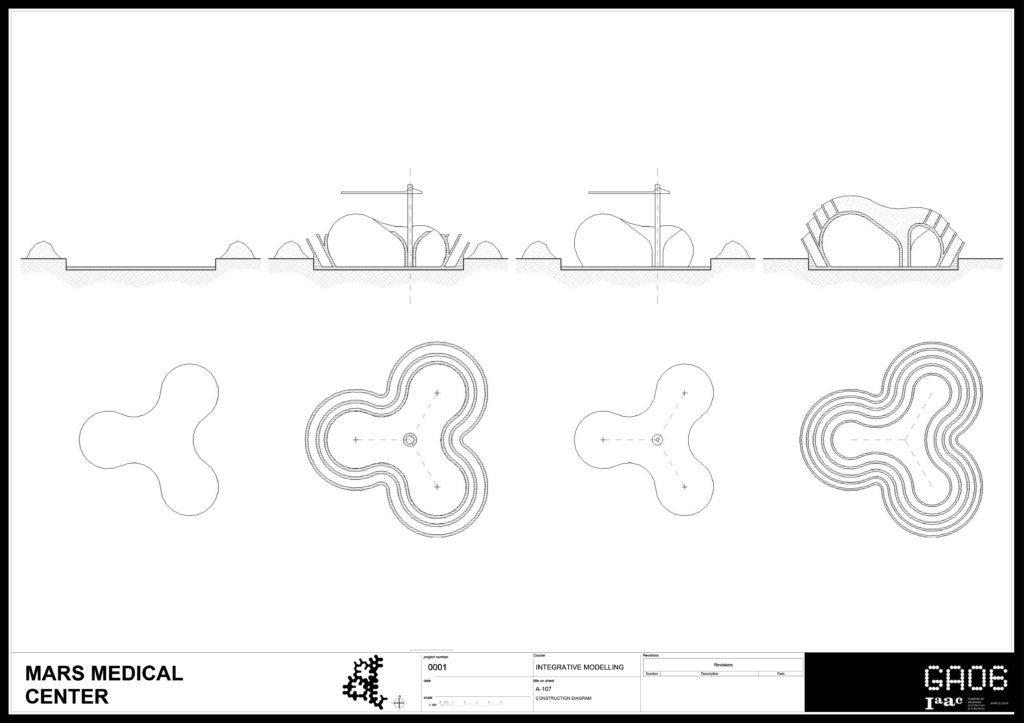
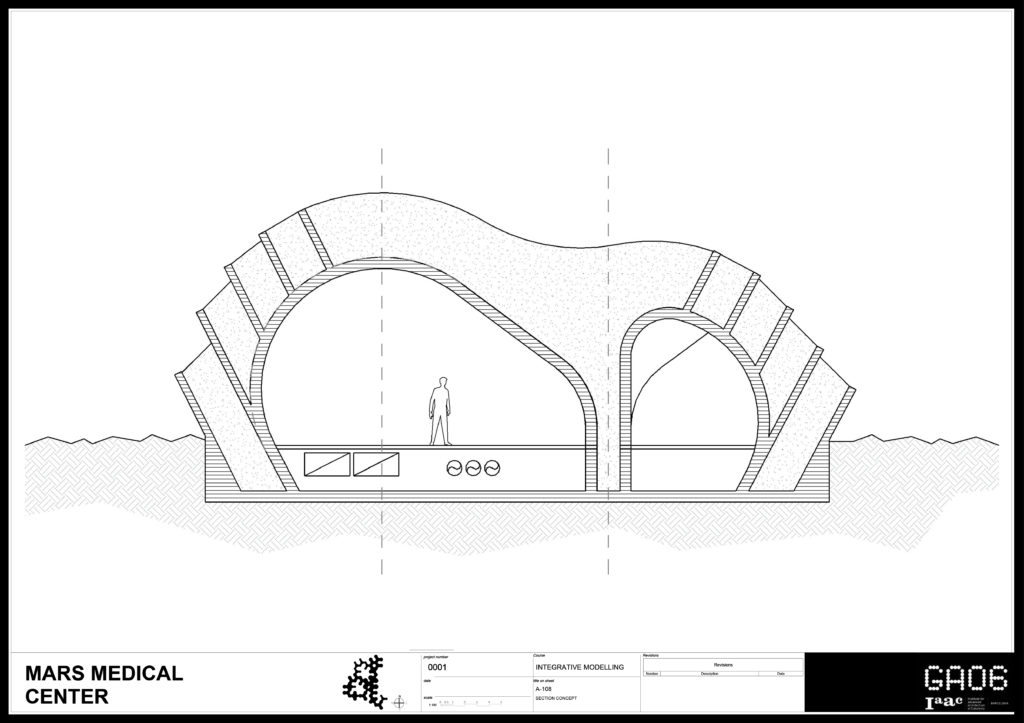
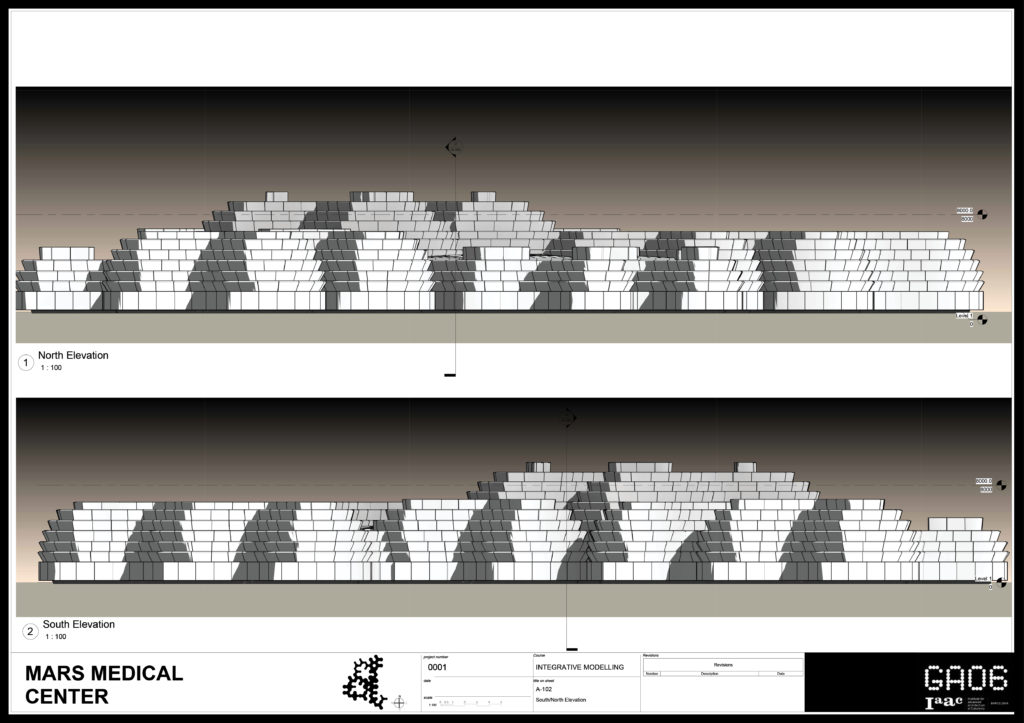
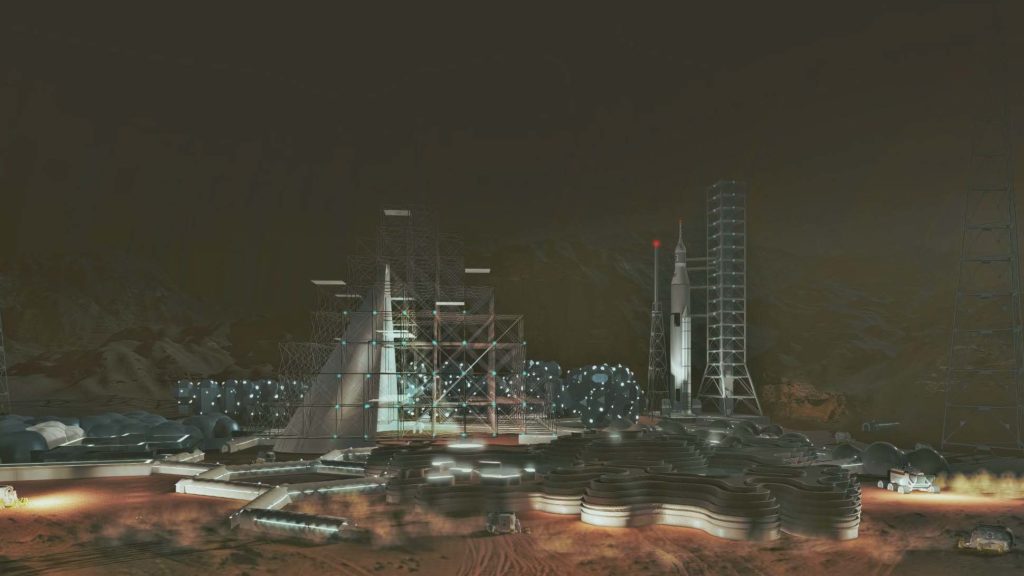
… and to end with a series of AI image explorations.
